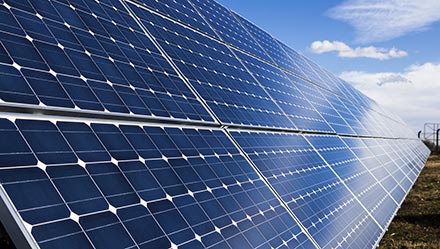Photovoltaic power plant in Ankara, Türkiye

Investor
Mehmet Dora, a businessman

Location
Ankara, Türkiye

Investment
2 MW solar photovoltaic plant

Investment Size
€2 million

Financial results
Payback period of 8.2 years

CO2 savings
1,300 tonnes of CO2 emissions per year

Impact
2 MWe of installed capacity; 2.6 MWh of electricity generation per year; increased Turkey's renewable energy capacity

Mehmet Dora is a businessman from Ankara interested in electricity generation from PV solar panels in response to the ever-increasing demand for this in Türkiye. He established a new company specifically for operation of a new solar plant in the village of Akbork, in Ankara province.
The investor applied for TurSEFF financing and advisory services to build this 2 MW photovoltaic plant.
The TurSEFF team performed the project analysis, including its financial-technical parameters and profitability, as well as environmental aspects to make sure the investment leads to sufficient energy savings and reduction of CO2 emissions.
The €2 million investment allows the generation of 2.6 MWh of “green” electricity per year, contributing significantly to a reduction of greenhouse gas emissions at the national level and an increase of the renewable energy capacity in the Turkish power mix. The investment will be repaid out of energy generation in slightly over eight years, generating revenue for many more years to follow considering the life-time of the equipment. In addition, to guarantee the plant’s smooth operation, top quality PV modules were selected to minimise the potential induced degradation effect (PID) that is particularly dangerous in hot climates.
This project demonstrates the attractiveness, profitability and sustainability of the solar power business for companies and its priceless value for the country and the environment.
This way the EBRD, through TurSEFF, supports the implementation of sustainable energy projects by the private sector. Together, the private, residential and public sectors can make a change to energy consumption patterns and environmental protection.



